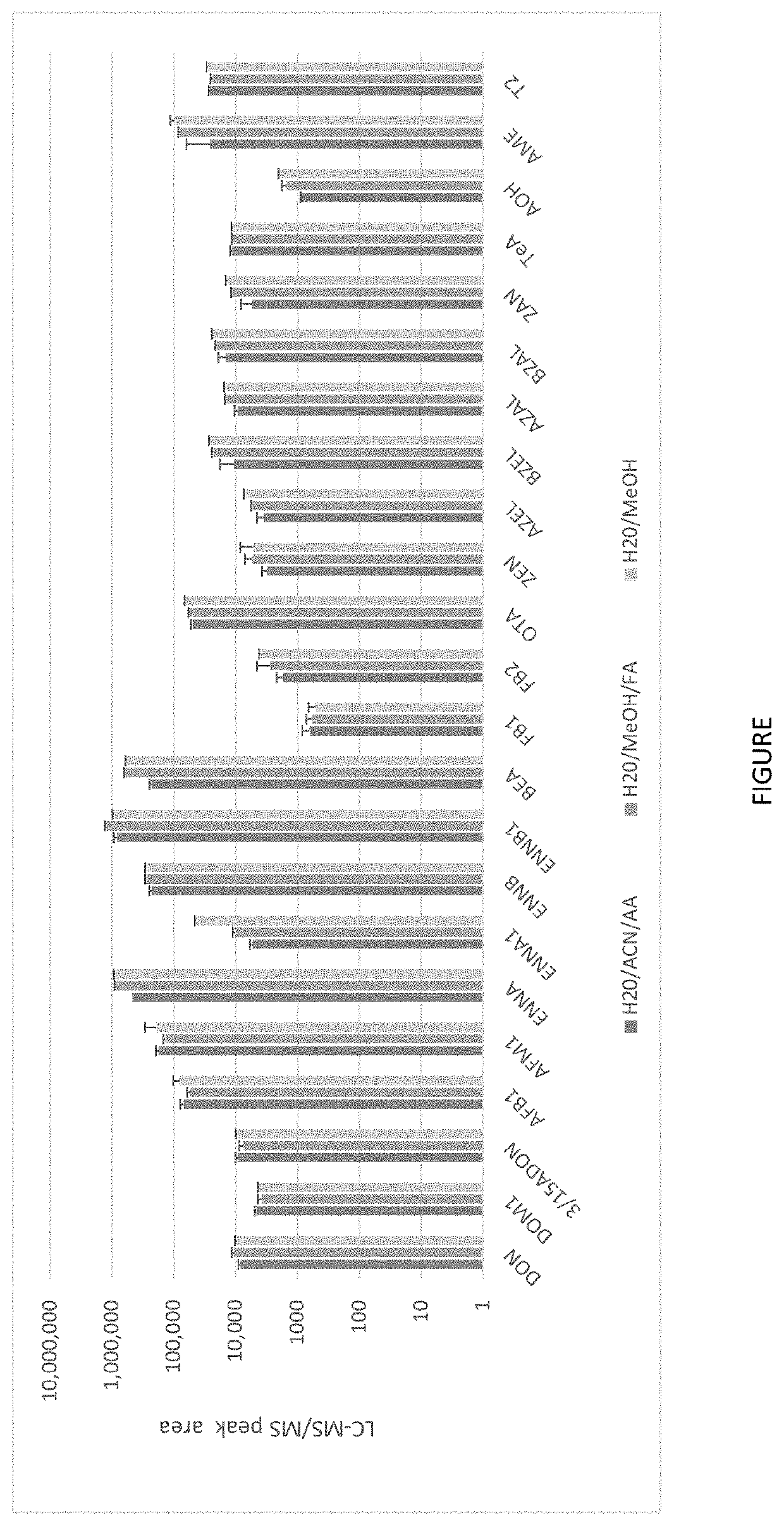The high and unpredictable variability of
raw material costs (cereals, proteins and fats) and the ever growing and complex load of toxins
contamination continue to negatively
impact productivity.
In today's environment, the presence of mycotoxins is an inherent risk.
Symptoms are often non-specific and cost the agricultural sector billions of dollars per annum.
Multiple mycotoxins can have a synergistic or additive negative effect, increasing the overall negative impact on animal's performance and health.
Mycotoxins from fungi in feed combined with bacterial toxins further increase the negative health issues.
However, individual
raw material (grains / seeds) and / or feed sampling for
mycotoxin analysis, although a critical factor, is often overlooked due to the high cost and the relative long (analysis) time involved.
Moreover, the sampling itself of raw materials constitutes a major limitation due to the existence of what is known as ‘hot’ spots and the estimated relevant error occurrence during the sampling procedure is ˜88%.
Additionally,
mycotoxin analysis of the raw materials does not necessarily warrant a true representation of the final feed that the animal consumes, as more mycotoxin transformations may take place during storage.
Also, producers often rely on quick and often cheap(er)
analysis tools for mycotoxin detection such as Lateral Flow Devices (LFDs) and ELISAs.
However, both methods are limited in the fact that a) cross-reactivity may occur which in turn can invalidate the results and thereby, impact scientific reproducibility and that b) only one mycotoxin can be detected at a time and that not all tests are fit for different types of feed.
Thus, this approach proves either insufficient or uneconomical for a full feed
risk assessment.
More importantly, inherently, the feed
risk assessment approach per se does not provide a true representation of the true
exposure of animals to mycotoxins.
However, this study deals exclusively with the application of the methodology to human applications and transfer of the proposed methodology to animals cannot be taken for granted.
However, the DBS-LC-MS / MS approach has not, yet, been adopted within the veterinary sector and no prior application for the detection of mycotoxins in farming animals is known to date.
Moreover, feed analysis is prone to significant methodological errors due to the presence of hotspots and the difficulty of determining masked mycotoxins, both leading to underestimation of the risk.
Therefore, although the feed
risk assessment still remains a tool, its real usefulness, when applied in isolation, remains highly questionable as it lacks vital information with regards to the true
exposure of animals to mycotoxins.
Additionally, routine mycotoxin
biomonitoring methods do not include mycotoxin phase I and phase II metabolites.
This may significantly underestimate mycotoxin exposure especially for heavily metabolized mycotoxins.
Although this method may be suitable for research purposes, the necessary use of an HRMS
spectrometer renders this method not suitable for use in real-field applications for the following reasons:1) the
raw data files generated by a LC-HRMS instrument are very large, implying that as a result
sample processing takes a lot of time, unpractical for use in daily screening2) HRMS analysis requires the use of a dedicated HRMS spectrometer, which is a different apparatus as compared to a (non-HR or classical) MS spectrometer; so, in order to perform the method described in this article, apart from the liquid chromatograph tandem
mass spectrometer, the operator needs to search for and submit the sample to a different apparatus, which, in view of its high cost and complicated
processing, not readily available;3) the overall process screening time required to process a DBS sample in this three-step process is quite long: the first run in ESI positive mode on the LC-MS / MS instrument takes around 16 minutes, the further run in ESI
negative mode on the LC-MS / MS instrument takes a further 12 min, and the additional run on the LC-HRMS instrument, also in ESI
negative mode, takes another 12 min; so, all in total a
processing time of at least 40 min (16+12+12) is required;4) finally, the method as described only allows for the detection of 24 analytes, which for multi-mycotoxin
biomonitoring often is insufficient.
Routine mycotoxin biomonitoring methods do not include mycotoxin phase I and phase II metabolites and this may significantly underestimate mycotoxin exposure especially for heavily metabolized mycotoxins.
 Login to View More
Login to View More 
